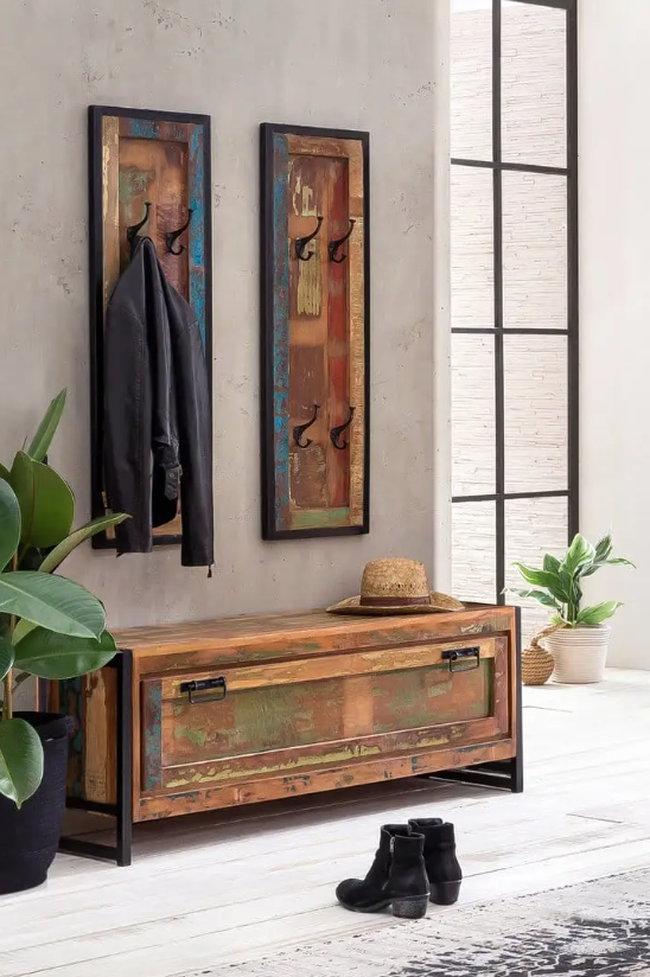Furniture styles show our personality and strongly influence our well -being at home. Which of the many styles really suits you? The selection ranges from the minimalist style of living with a focus on functionality and high-quality aesthetics to the lively boho style, which enables a creative mix of vintage furniture and accessories.
Various furnishing styles have developed and developed in recent years. The Scandinavian style is characterized by clear lines and natural materials, while the industrial look that was created in the 1960s is characterized by unplastered brick walls and steel structures.
Choosing the right furnishing style is particularly important for the living room, which is the central space of every apartment. The concept "Hygge" , which stands for cosiness and relaxation, is becoming increasingly popular.
This guide shows you various living styles. He supports you in discovering the right furnishing style that not only looks nice, but also perfectly fits your personality and attitude to life.
What are furnishing styles anyway?
Before you fall into the world of various design directions, it is worth taking a step back and understanding what furnishing styles are actually.
A furnishing style essentially describes a coherent overall concept in which furniture, wall colors, textiles and decorations are coordinated. ”
It forms the design basis for the atmosphere of a room and gives the home a recognizable character.
The way to your own furnishing style often begins with thorough research. Knowing the various styles with their differences and similarities makes decision -making significantly easier for personal interior design . It should be noted that not every style fits every room - the apartment style is also determined by the cut and size of the apartment.
Difference between living style and furnishing style
Although the terms are often used synonymously, there is a fine but significant difference: the furnishing style primarily refers to the material equipment and the visual appearance of a room. It includes the entirety of the equipment and decoration objects of interiors.
Interior design , however, goes beyond this. It encompasses not only how an apartment is furnished, but also how one lives in their home – with certain values and a personal philosophy of life. This includes lifestyles such as the Swedish "Lagom ," the Danish "Hygge," or concepts like minimalism and sustainability, which reflect a deeper philosophy of life.
An example: A minimalist furnishing style can include functional furniture with clear lines and a reduced color palette. However, the minimalist style of living also includes a conscious decision for reduction, sustainability and more mindful consumption - a lifestyle that goes beyond mere aesthetics.
Why the style should fit personality
Our personality is closely connected to the design of our home. The place where we can ideally feel the most relaxed and authentic is our home. Therefore, the way we shape it reveals a About us of personality. This connection was demonstrated by psychologists in studies.
For many years, the US psychologist Gosling the connections between personality traits and interior design styles , and has demonstrated that personal characteristics and furnishing choices are linked. The deliberate selection of furniture reflects a person's individual life.
The interior design specialist Dr. Alessandra Wood from the USA, also known as The Doctor of Style, has associated furnishing styles with personality traits such as open-mindedness, conscientiousness, extra version, tolerance/empathy and neuroticism, based on the "Big Five" personality features . This connection illustrates the deep roots of our residential preferences in our personality.
When choosing your own furnishing style, you should ask yourself the question:
Which furnishing style I like and fits me and my way of life? "
Ultimately, it is not about following slavish design guidelines, but finding a style that exudes harmony and not only serves to impress guests.
Some crucial aspects in choosing the right style:
- The furnishing style should match both personality and living space - an industrial loft -ambient appears in a row house from the 1960s.
- The facility should be a retreat that helps to relax and convey security and security.
- The decision for an interior style takes time and does not happen overnight.
- combine different styles , but you should avoid mixing too many different styles in a room.
For many people, furnishing is more than just an aesthetic exercise - it is an expression of one's own personality, one's own values and their own way of life. Every piece of furniture, every color and every detail tell something about how we see the world and what we reveal from ourselves.
A home is therefore not just a place to live, but a space that tells our story. By making conscious choices when furnishing it, you can create a space that is not only visually appealing, but also reflects your inner world and contributes to your personal well-being.
How do I find my personal living style?
The search for your own furnishing style can initially be overwhelming. It is easy to lose track between countless sources of inspiration and styles. But don't worry - with the right methods, the personal living style can be systematically discovered.
The way to the right furnishing style is as individual as you are.
Inventory: What do I like?
Finding your own furnishing style begins with an honest inventory. Furniture often gather over the years, do not go together, do not go together and create unrest that can even cause stress. The first step is to initiate a finding phase.
Start collecting all the ideas for the interior design that you spontaneously address. Pay attention to the following aspects:
- Which living style do you basically like?
- What atmosphere should your newly designed space radiate?
- What colors do you prefer?
- Which materials feel pleasant for you?
- Which existing furniture would you like to keep?
- What new purchases have you been dreaming of for a long time?
- What do you want to separate?
A helpful tip: Take a look in your wardrobe. The colors and styles you wear often reflect your interior design preferences. This method helps you intuitively recognize your personal taste.
You should also let your apartment work on you. Which rooms or corners do you particularly like? What bothers you? These observations are important indications of their preferences.
Create the Moodboard
A Moodboard is a powerful tool to visualize your furnishing dreams. It helps you to coordinate ideas and bring together a uniform style. According to experts, creating a mood board is even one of the crucial first steps in every furnishing project.
How to proceed:
First you collect inspiration from living magazines, Pinterest, Instagram, interior blogs or browsing through furniture stores. Photograph rooms that you like and collect material samples such as fabrics, wallpaper patterns or color cards.
Then arrange the collected material. This can traditionally be done on a large box or digitally using apps such as Canva. The following procedure is recommended when arranging:
- Set the surfaces : Start with the largest areas - ceiling, walls and floor.
- Choose interior textiles : Add rugs , upholstery, curtains and pillows.
- Include accessories : complement lights, picture frames, plants and other decorative elements .
- Arrange : Push everything back and forth until you are completely satisfied with the overall picture.
In the following YouTube tutorial, interior designer Zahira Cury from D.Signers how to create Moodboards, be inspired, organize your ideas and shape the design process like a professional.
Practical: In the YouTube description, the interior gymnastics expert provides a template for download.
A well -thought -out moodboard not only serves as a source of inspiration, but at the same time as a practical guide for later purchase decisions.
Style test
If you are still unsure which furnishing style fits best, you can do a style test . These tests offer quick orientation and help to identify your own living type.
There are different types of tests:
At imaging tests , simply select photos of facilities that you like. Based on your preferences, it is then automatically determined which style appeals to you - sometimes even as a combination of up to three different styles.
Other tests work with targeted questions about their preferences for colors, materials, patterns or even eating habits and taste of music. Questions like "Do you like carpets?", "What colors would you choose for your walls?" or "Which pattern can it be?" help to recognize your preferences.
However, it is important to understand: a style test shows only a rough direction and cannot comprehensively depict how you should best set up. In reality, we usually like different aspects of different styles. A coherent facility therefore often combines nuances of different styles that work together harmoniously.
At the same time, you should consider that your interior design style should reflect not only your personal taste, but also your lifestyle and the architecture of your home. A style that works perfectly in a modern loft might look out of place in an older building.
Take your time for this process. Finding the personal furnishing style does not happen overnight, but gradually develops while you discover and refine your preferences.
The 5 most popular furnishing styles at an overview
Some have been particularly established among the numerous furnishing styles and are extremely popular. These five styles significantly shape the current living landscape and offer the right atmosphere for every taste.
Scandinavian / Scandi style
The Scandinavian furnishing style is characterized by functionality, clear lines and simplicity. Created in the 1950s, it is based on the affection for nature and mainly uses natural materials such as local wood, rattan as well as linen, cotton and leather. The color palette is discreetly kept, with white as a predominant basic color and is supplemented by light beige, brown and gray tones.
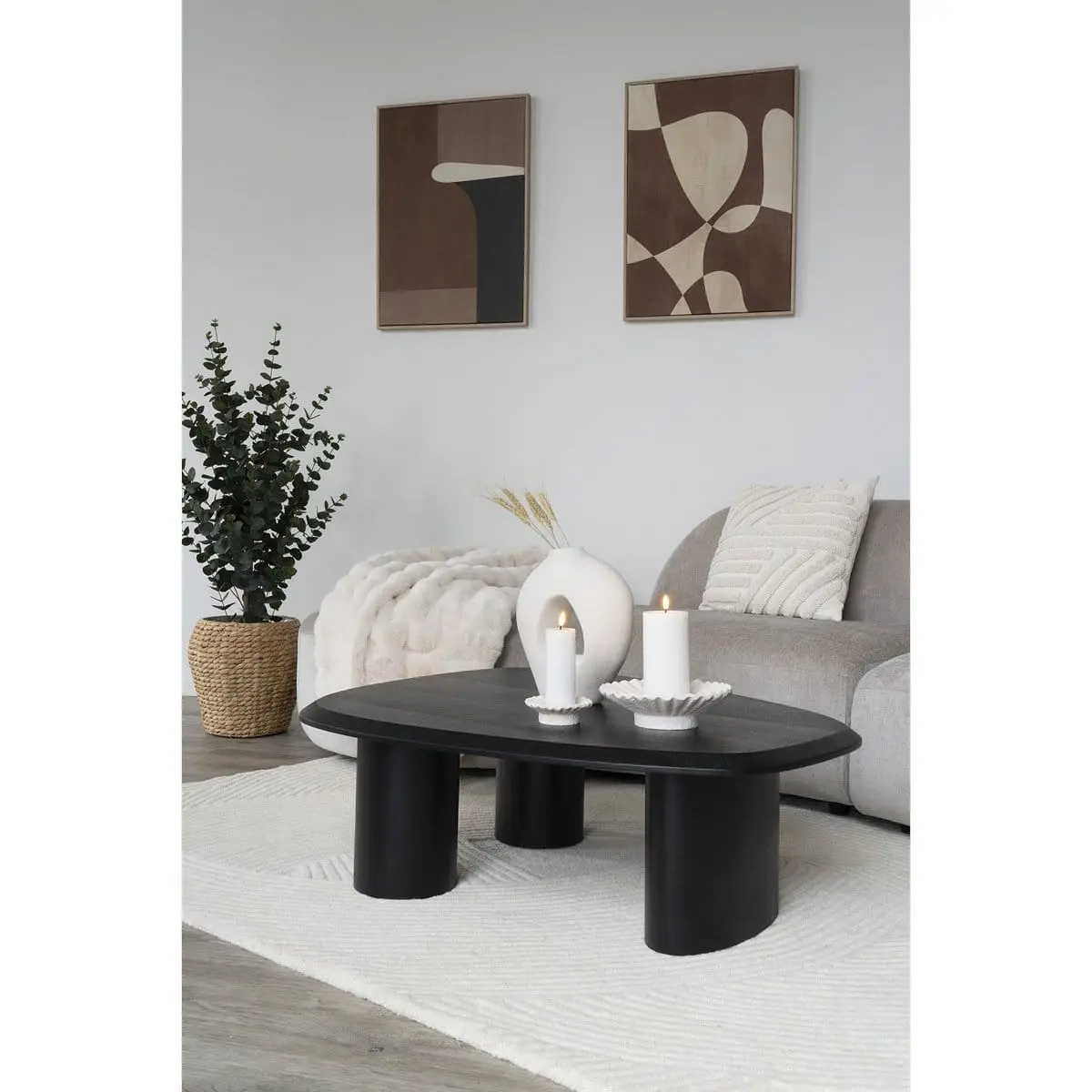
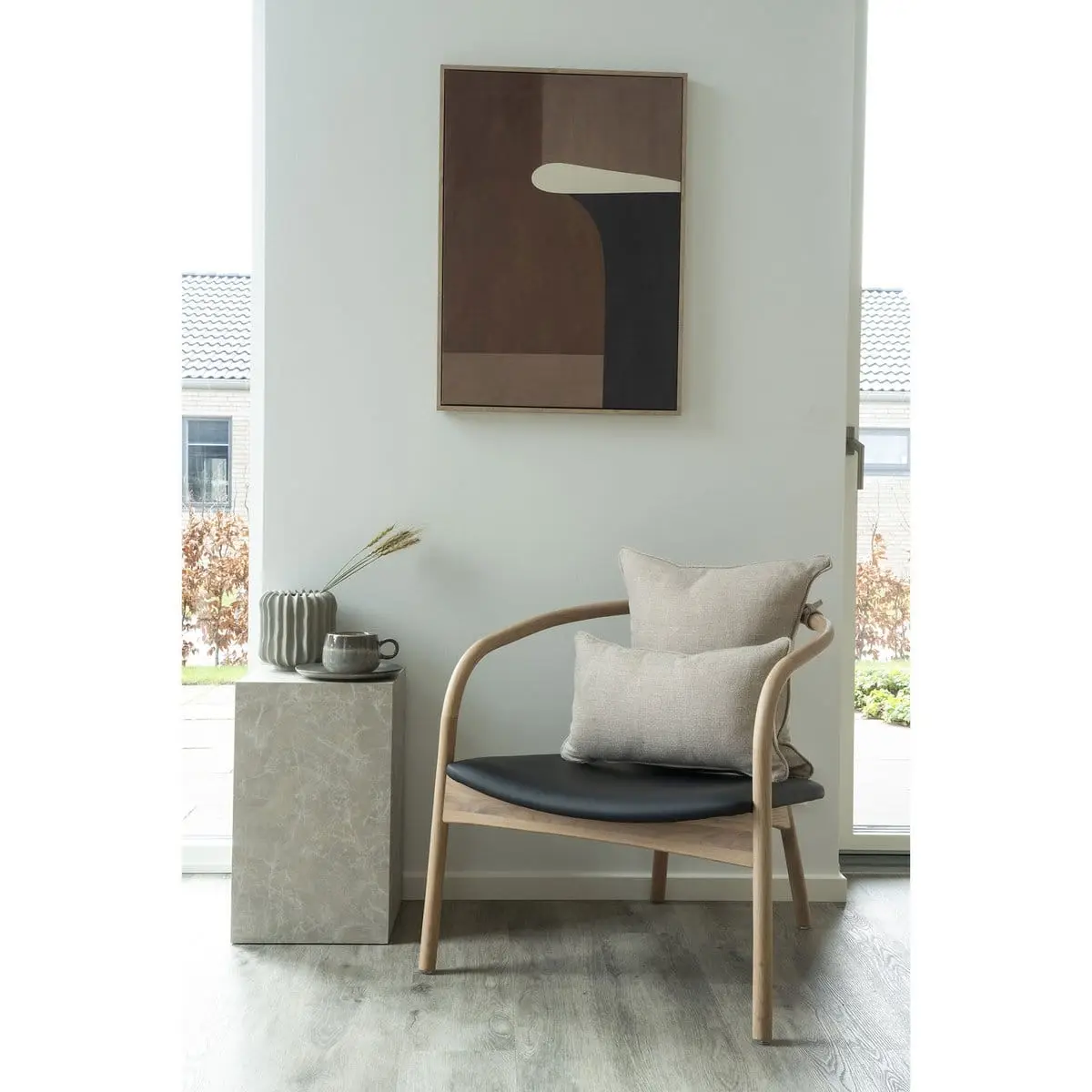
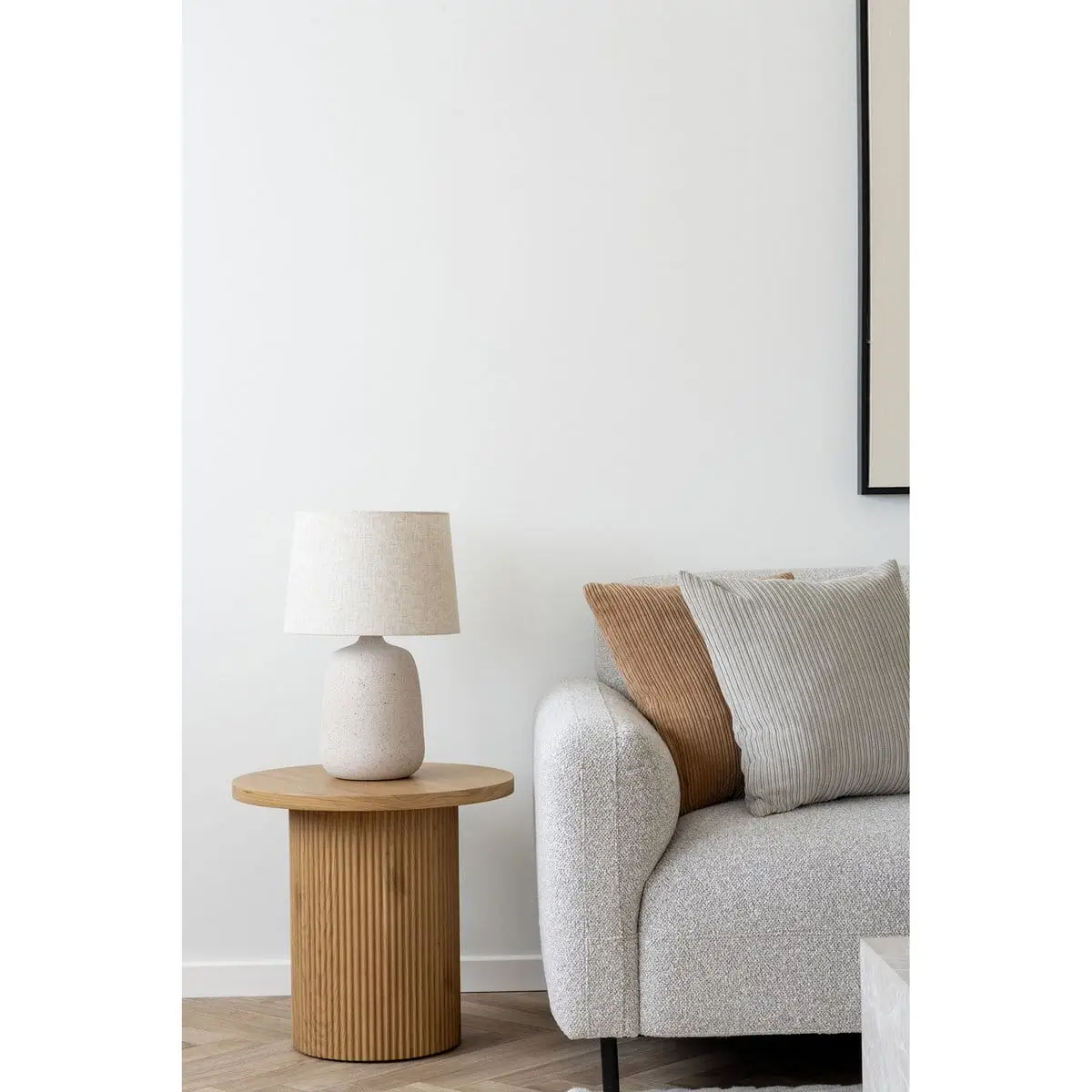
Characteristic of this type of living are bright wood types such as birch, spruce or pine that spread a warm and natural atmosphere. The generous use of daylight is also of considerable importance - especially in view of the long, dark winter in Northern Europe.
Two ideas have also shaped the Scandinavian style: the concept of "Hygge" from Denmark, which embodies cosiness and security, as well as the Swedish concept of "Lagom" , which emphasizes a conscious and resource -saving lifestyle.
Boho style / Bohemian Chic
The Boho style , for short for "Bohémien" , has its origin in France in the 17th century and originally described the unconventional lifestyle of the peoples from Bohemia. After artists initially adapted this style in the 19th century, the hippies later took up many of the typical elements. Earthy tones such as brown, beige and olive are characteristic of the boho-chic, combined with bright colors as an accents.
The furnishing style lives from materials such as wood, rattan and natural textiles as well as from a pronounced mix of styles. Various patterns are also typical that can be combined with each other regardless of losses. macrames and dream catchers are particularly popular in a boho look Plants also play a major role and ensure liveliness and freshness in the room.
Industrial
In the 1960s, the industrial look on the basis of a forced position, as an artist in metropolises such as New York and London, transformed abandoned factories in residential and workplaces. Instead of concealing construction defects, it was decided to specifically present unplastered brick walls, exposed pipes and steel structures. The color palette of this style mainly consists of gray, white and black tones, which are supplemented as accents by dark rust, green or blue tones.
The focus of the materials is raw wood, worn leather and concrete. Industrial-style furniture is often made of metal, steel or rustic wood and are characterized by their stability and clear shape. Pendant lights in the workshop style that hand over targeted light and vintage elements from the flea market are particularly striking.
This furnishing style has its full effect in spacious, open rooms with high ceilings.
Minimalistic
The minimalist interior design style adheres to the Bauhaus principle of "less is more ." It's about the right balance of aesthetics and functionality. It's about straight lines, clean forms, and practical space utilization. The room primarily features white and light colors, which enhance the feeling of spaciousness and reflect natural light. Gray and taupe can add depth. Black is used deliberately for contrast.
The style is characterized by consciously avoiding unnecessary things to rethink your own consumption, not to throw away loved ones. In a simply furnished living room, there are only a few pieces of furniture that are mostly in neutral colors. Quality always goes through quantity.
Country house
The country house style combines old charm with modern elegance and was created in the 17th century in Great Britain. Today he changes his image and combines old craft with a simple, modern design. With this furnishing style, natural materials such as wood, linen and stone are used to create a cozy and inviting atmosphere.
The color selection includes natural colors such as sand, chocolate and forest, often combined with light tones. Solid wood, especially oak, is important and becomes more and more handsome over time when it develops an attractive patina.
Popular styles combine simple Scandinavian designs with cozy Alpine elements. These styles are characterized by subtle colors, natural fabrics and practical furniture. This modern country house style not only looks nice, but also shows that you pay attention to the environment and use resources sparingly. Wood, which comes from sustainable forestry, is very durable and can exist over many generations.
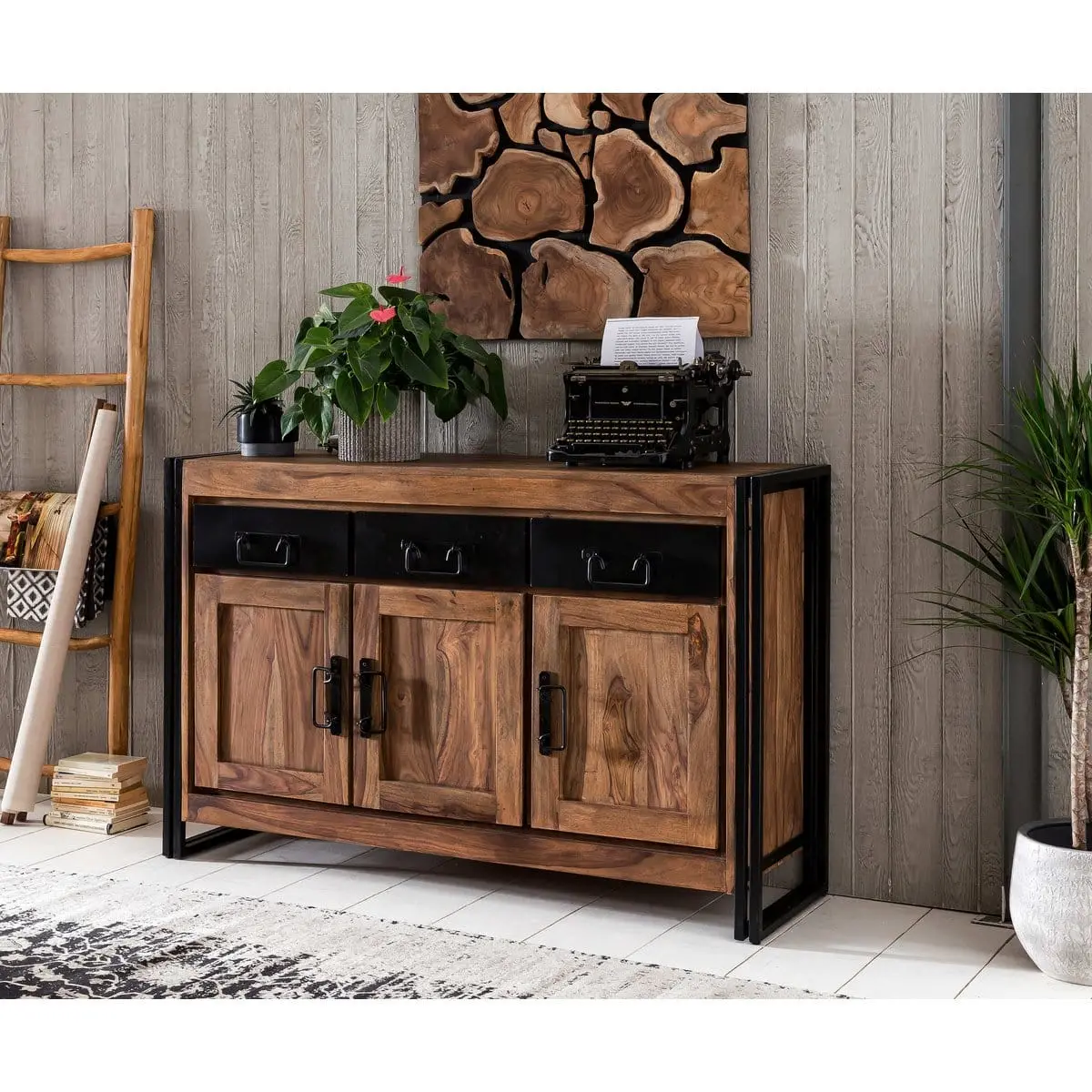
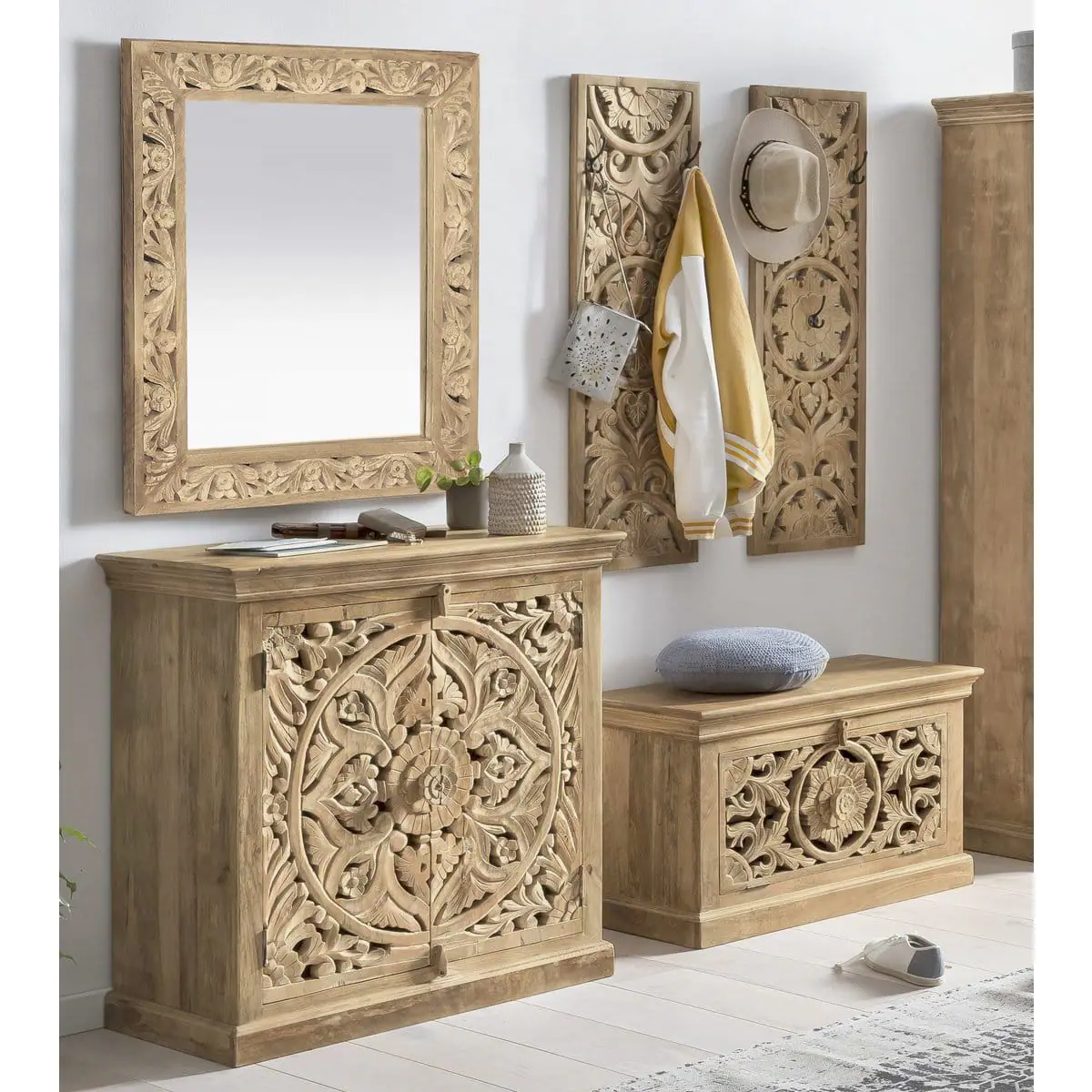
Furnishing styles according to the attitude to life
Beyond the classic styles, styles of furnishings have become particularly established in recent years that represent more than just aesthetic decisions - they embody entire feelings of life and philosophies. These living concepts not only offer visual guidelines, but also ways to more well -being and satisfaction in your own home.
Hygge: security and warmth
The Danish concept "Hygge" (pronounced: "Hü-Geh") stands for a deep feeling of cosiness, security and warmth. No wonder that Denmark is one of the happiest countries in the world "World Happiness Report" The Danes are only overtaken by the Finns, while the Scandinavians perform astonishingly well overall - despite a long, dark winter days.
The word "hygge" from Norwegian and means "cosiness" , but cannot be translated with a single German term. Rather, it describes a holistic philosophy of life that begins at the facility and extends to all areas of life.
The most important elements of the hygge furnishing style:
- Light as a heart : atmospheric, warm light through candles, fireplace or seized lamps creates a cozy atmosphere.
- Natural materials : cuddly woolen blankets, soft leather and solid wood ensure original and warmth.
- Color palette : warm natural tones such as beige, crème and brown form the base, supplemented by neutral colors such as white, black and gray.
- Social component : An essential part of the hygge feeling is being with friends and family-therefore cozy seating areas and dining tables are central.
An absolute must in the hygge at home is the "hyggekrog" -a cozy corner for withdrawing, be it a wing chair or a collection of floor pillows.
Lagom: Find the balance
The Swedish word "Lagom" means "the right measure" and goes back to an old tradition of the Vikings. These filled a common drinking horn with exactly the right amount of a drink - enough for everyone, but not too much. It should be enough "for the whole team).
In contrast to the comfortable abundance of hygge style, Lagom stands for balanced reluctance. This furnishing style wants to encourage clarity, order and calm and promote a more conscious, sustainable life. Lagom is therefore the exact opposite of abundance, hustle and bustle and disposable mentality.
Characteristic features of the Lagom facility style:
- Golden center : Neither too much nor too little - functional, selected furniture in neutral, natural colors.
- Light and brightness : Sufficient light and a bright interior design for a friendly, open atmosphere.
- Sustainability : high -quality, durable materials and pieces of furniture that hold for generations.
- Balance in all areas : the style not only focuses on the facility, but on a balanced lifestyle as a whole.

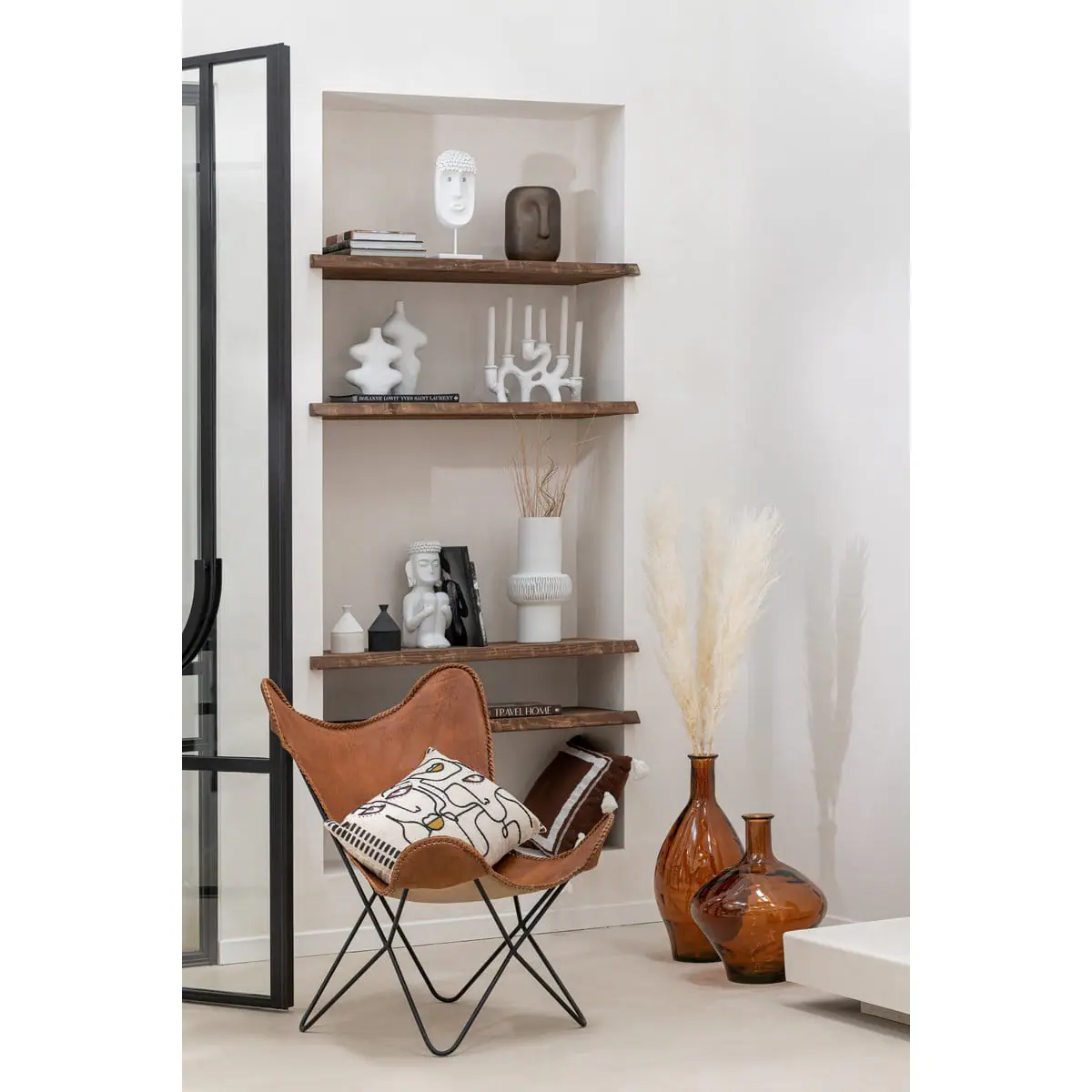
Wabi-Sabi: Beauty in imperfect
From Japan, Wabi-Sabi apparent contrasts: simplicity and depth, clarity and character. "Wabi" originally meant sad or lonely, while "Sabi" stood for age and patina. But over time, this term received a more positive, almost poetic meaning - the ability to recognize beauty in imperfect.
Wabi-Sabi is not a pure furnishing style, but a mentality anchored in Zen Buddhism, which, however, can be transferred wonderfully to living.
Central principles are:
- Reduction to the essentials : turn away from soulless consumption and limit yourself to what is necessary.
- Appreciation of imperfection : signs of use and patina are not hidden, but are estimated as part of the history of an object.
- Natural materials : high -quality, local materials in their natural shape without revision.
- Optical emptiness : rooms look airy and offer space to breathe.
Wabi-Sabi is often referred to as "imperfect purism" -a liberating departure from the compulsory perfection that creates space for authenticity and personality.
Ultimately, all three attitude to life instincts combines one thing: they go beyond purely aesthetic considerations and promote a more conscious, balanced and more fulfilling life in their own four walls.

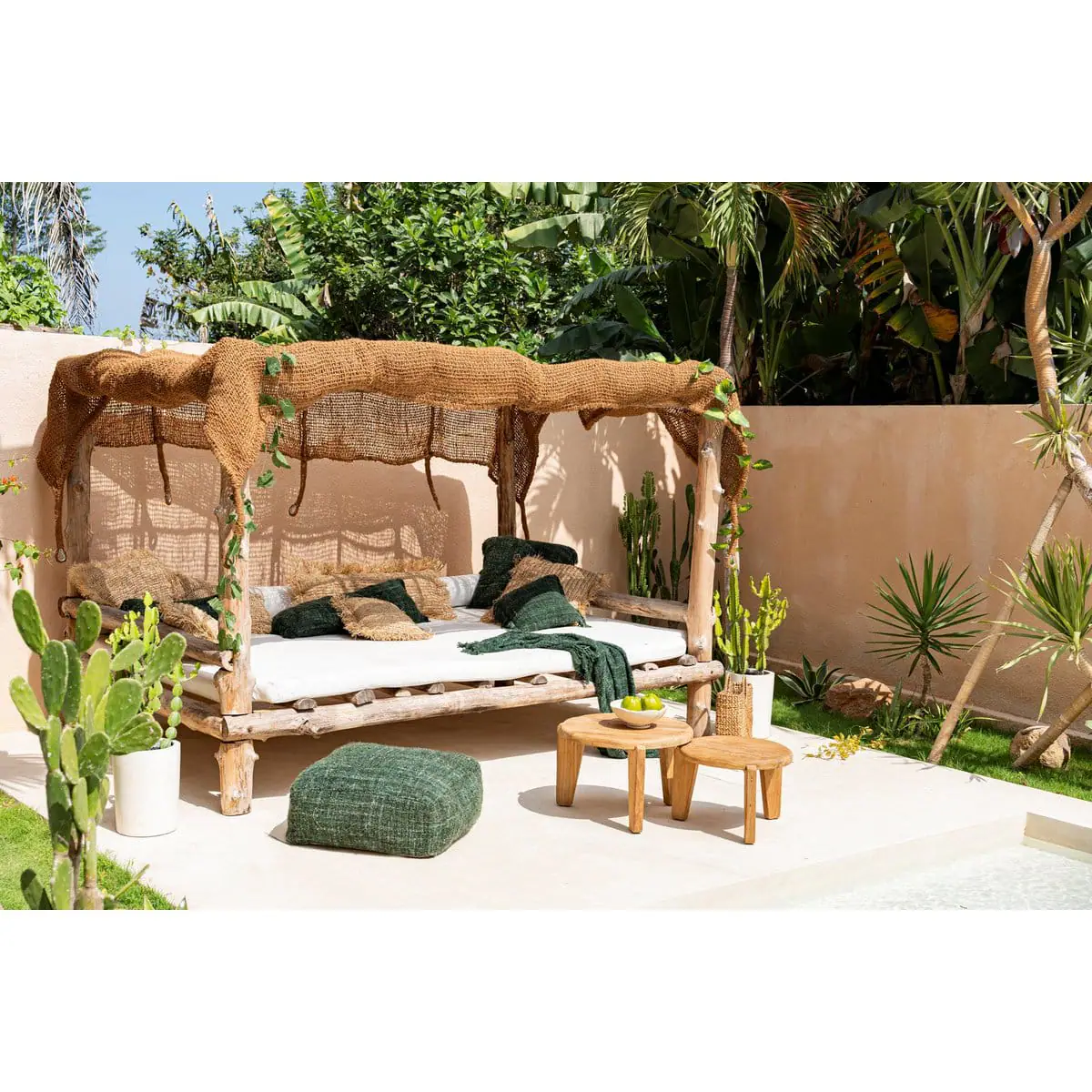
Pop art: individualistic furnishing style with exclamation mark
The furnishing style of pop art is just the right thing for mindful of expressiveness. Like a thundering storm that celebrates himself and sometimes challenges himself- similar to the rebellious art movement, which in the 1950s and 1960s came up as a rebellious opposite pole to the withdrawn high culture.
The visual suction of pop art style lies in its unique visual expression. Strong colors collide with striking contrasts, artistic designs with oversubscribed elements. This is about striking individual pieces that encourage the chats that are directly lively. The design language is often minimalist, but never boring - clear contours and geometric figures create an urban mood.
Pop art cleverly juggles with mass culture and transforms banalities into works of art. ”
Comic characters, iconic company emblems and motifs from the media are redesigned in creative, rebellious way. The elegance hugs irony and plays with a sly look with goods of consumption. Anyone who chooses the pop art as their artistic home designs an environment full of momentum and cheerfulness. The colorful splendor and playful details conjure up a smile on the face and bring momentum into the gray everyday life. Especially in minimalist, urban dwellings, this look breathes blunt vitality to its own four walls.
Additional plus point: Pop art is changeable . Individual statement pieces can be easily inserted into existing design concepts without the entire ambience having to be changed. A striking seating here, an expressive painting there - and the beginning has already been made.
The factor of individuality and rebellion against conventions should never be neglected. The use of pop art is a clear sign against uniformity and the individuality is expressed. For those who have the courage to get out of the mainstream for those who have the courage.
Materials with character
Pop art embraces smooth, shimmering surfaces that reflect light and make vibrant colors appear even more radiant. Plastic in all its forms—from acrylic to polycarbonate—plays a central role in this design. The Plastic Chairs by Verner Panton and Eames were truly legendary symbols of that era.
The noble metal also has its big appearance, especially in radiant variants such as chrome or shiny aluminum. It emphasizes the industrial and modern aesthetics of the design and sets a fascinating contrast to tender fabrics. It is like this for fabrics: the more bold, the more beautiful. Blessing colors and artistic designs on velvety, artificial or innovative fabrics are characteristic of pop art. Let it sparkle and glitter - metallic effects emphasize the extravagant character.
Furniture as a statement piece
The furnishings in pop-art design are real eye-catchers-be it due to their unusual form, their lively coloring or their gigantic dimension. Legendary works such as the "Lip sofa" by Salvador Dalí or the "Ball Chair" by Eero Aarnio are the personified essence of the playful and innovative flair of this current.
Characteristic are natural, flowing forms that are reminiscent of the grace of comic art. Chairs in lip or hand shapes, couches with extravagant curves or tables with organic, asymmetrical lines- use here and pleasure into a harmonious whole. The main roles in the colors play red, blue and yellow, supported by striking pink, orange or lime green.
Often it is the sharp contrasts between dark and light that offer the colorful color sliders a stage on which they can shine particularly.
Accessories with wink
With the accessories, the playful character of the pop art style is particularly evident. Broken with conventions here: oversized everyday objects such as huge light bulbs as lamps or XXL lipsticks as decorative objects are typical representatives.
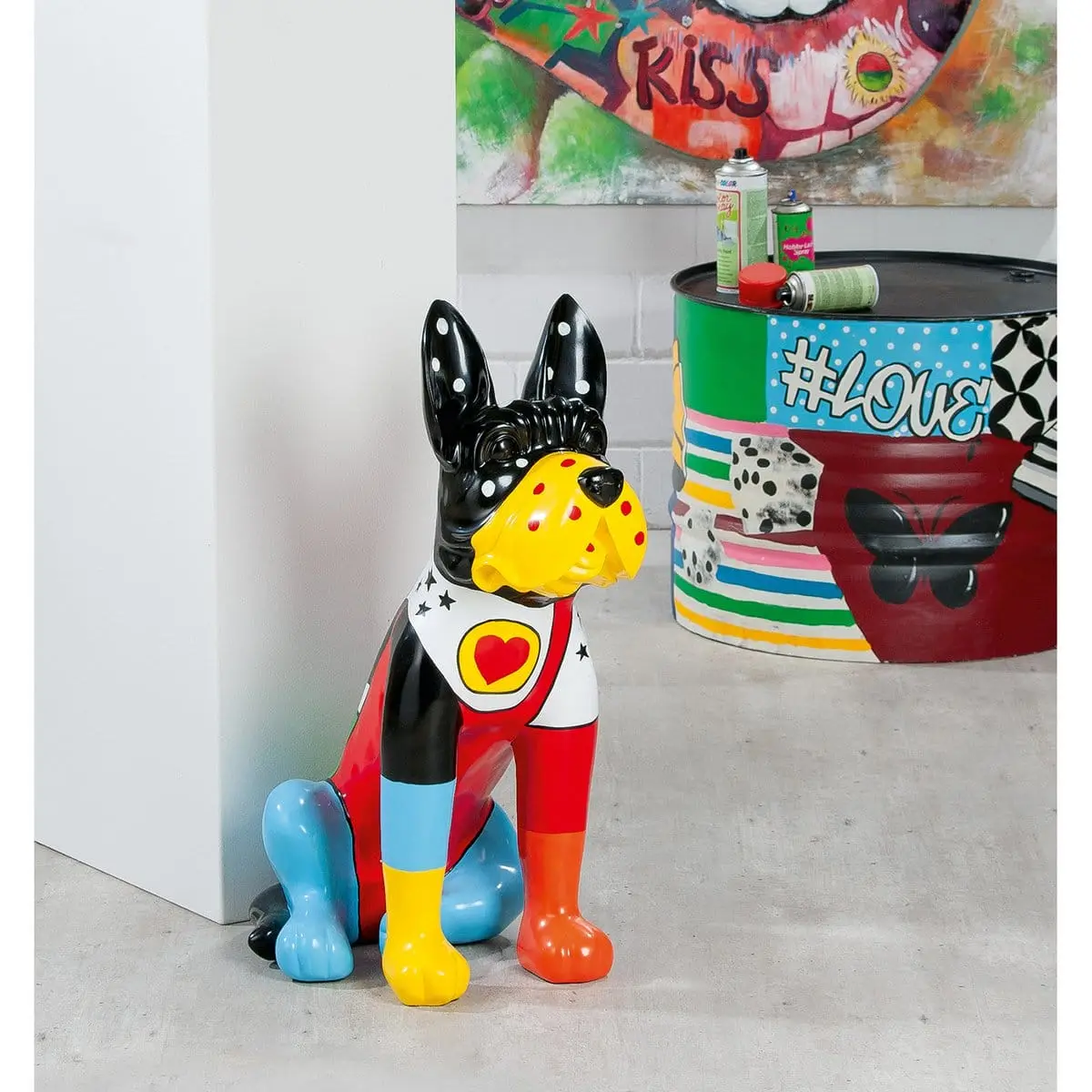
Art naturally plays a central role - large -format prints in the style of Roy Lichtenstein or Andy Warhol are part of the standard repertoire. Comics, advertising and film stars provide the motifs that are often implemented in bright colors and with scanning points.
Typical accessories are:
- Large-format pop art prints and canvases
- Design objects with comic character
- Reflective or metallic sculptures
- Cushions with graphic patterns or speech bubbles
- Unusual lamps with unusual shapes
- Decorative objects related to pop culture
Pop art definitely brings color and joie de vivre to everyday life-a style of furnishing that never gets boring and always surprises the viewer again.
Shabby chic: furnishing style with a nostalgic charm
Shabby Chic enchants with its poetic mix of nostalgia and lightness. This furnishing style was created in Great Britain in the 1980s and has since lost none of its special charm. The basic idea is as simple as it is impressive: what looks old and used tells a story and creates a warm, lively atmosphere.
What makes the Shabby Chic so distinctive is its wonderful imperfection. Here - yes, the traces of time may be visible. Disblessed color, slight signs of wear and gentle patina are not flaws, but tell of past times and give the rooms a special depth.

The color palette is mostly in the bright spectrum. White in all its nuances, from chalk to ivory white, dominated and is supplemented by delicate pastel tones such as rosé, light blue or lind green. These gentle tones create an airy, light atmosphere that makes the room appear larger and friendlier.
The Shabby Chic wonderfully combines the romantic with the practical. It creates a feel -good atmosphere that is elegant and cozy, playful and functional at the same time. "
The aesthetics are reminiscent of French country houses or English cottages - timelessly beautiful and full of grace.
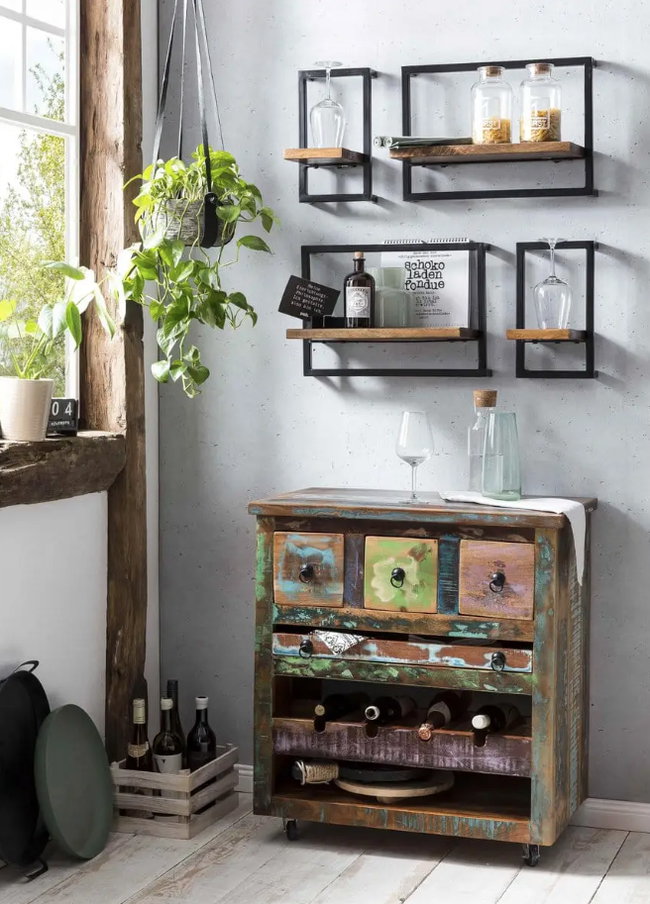
Those who succumb to the charm of Shabby Chic relies on durability and uniqueness. Instead of constantly purchasing fresh furnishings, existing pieces of furniture are spiced up, redesigned and provided with a pinch of new magic. Through artistic brush strokes and tender renovation, ancient chests, armchairs or showcases get a unique personality.
An additional plus point: Shabby Chic does not resent small breakdowns and even becomes more handsome over time. In contrast to other furnishing styles that consider every scratch as troublemakers, every scratch is lovingly integrated into the total work of art in the shabby chic. This makes it particularly suitable for families and daily use.
The mixing of various styles, patterns and structures conjures up a facility that is truly unique.
Materials with history
Natural fabrics rule in the shabby chic and give it his cozy, real flair. Wood takes the top position - from the rustic oak to the graceful birch. It is of great importance that the wooden surfaces are either aged or artificially transferred "antique" appearance "distressing" . Fabrics are of the same importance and breathe gentle and comfort to the rooms.
The favorite materials are linen and cotton in gentle, natural colors. Exquisite embroidery and floral patterns emphasize the romantic note of this look. Metals such as iron or brass are cordially invited to accept a noble patina or to consciously dress in an ancient style. Rusty traces or a slightly dull surface are welcome and emphasize the nostalgic spell. Even delicate colors and playful patterns decorate porcelain, ceramics and enamel in shabby chic.
Furniture with character
Furniture in shabby chic usually has a vintage or ancient character. Typical are chests of drawers, cupboards and sideboards in French or English country house style. The bright, often white coloring is characteristic, whereby the color is deliberately applied unevenly to achieve a worn look.
Popular techniques are the grinding of the edges to make the wood or earlier layers of color visible, as well as craqueling, in which fine cracks are created in the surface. These techniques give new furniture the appearance of nostalgia.
Typical pieces of furniture are:
- Serve and buffets with curved lines
- Beds with high, often padded head parts
- Armchair and sofas with lush padding and bright references
- Solid wood dining tables with signs of wear
- Chairs with turned legs and braided seats
- Wooden or metal rocking chair
- Mirrored dressers and dressing tables
Accessories with soul
The accessories make the shabby chic really alive and cozy. They tell stories, awaken memories and create a personal atmosphere. Floral elements are particularly important-fresh flowers in enamel can, dried herbs or artificial rose bouquets bring nature into the house.
Vintage flea market finds, old photographs in delicate frames, or antique mirrors with slightly opaque surfaces underscore the nostalgic character. Candles in various sizes provide warm light and a romantic atmosphere.
Typical accessories are:
- Topping corners and crocheted table runners
- Egret jugs and bowls in pastel colors
- Shabby Chic picture frame with patina
- Crystal or porcelain kron candles
- Vintage pillow with ruffles or flower patterns
- Old metal signs with a faded font
- Ancient Watches and candlesticks
The connection between the past and the present in shabby chic is as attractive as it is complex. He creates rooms that, despite their nostalgia, appear up to date and radiate a wonderful mix of romance and homeliness.
Furniture styles by regions
Regional furnishing styles transport us to other parts of the world and bring their cultural peculiarities into our own four walls. They tell stories of traditions, climatic conditions and historical developments by different countries and continents.
Japanese - design language of the rising sun
The Japanese residential culture shines with its extraordinary simplicity and deep rooting in nature. In minimalism, the core elements of this design style are emphasized by putting the essentials into the foreground and avoiding superfluous. What is striking are clear outlines, simple pieces of furniture and organic materials such as wood, bamboo, stone and paper that create a calm and relaxing atmosphere.
The Japanese concept "Ma" emphasizes the importance of silence and expanse when setting up rooms and forms the heart of the Japanese living concept. Not everything is paved with things, but a place is left to create a balanced atmosphere. The color selection presents itself in unobtrusive nuances that are shaped by gentle earth tones such as ivory, sand, marble and wood and thus create a calming atmosphere.
Traditional components such as Tatami mats, flat tables and floor cushions are simple and functional furnishings that focus on essential. Both the light and the shadow occupy a significant position, obtaining their creative energy from the philosophy of Zen Buddhism .
Mediterranean - in the style of the Mediterranean area
The furnishing style of the Mediterranean gives the home the pleasant ease and warmth of the south. It combines influences from various Mediterranean countries, with Italy, Spain, Greece and southern France in particular. The sea and characteristic natural materials are always the connecting elements.
Earthy colors such as brick red, mustard yellow and desert sand are typical, paired with cozy cream tones, moss green or strong ocean blue. Raw wood such as pine or oak, ceramics, terracotta, stone and marble, paired with tender fabrics made of linen or cotton, dominate the scenery.
There are exciting peculiarities from land to country: Elegant simplicity and fine fabrics are highly valued in Bella Italia, in Spain rustic, expressive elements dominate with a touch of moorish influences, and in Greece the characteristic white-blue combination stands for freshness and clarity. Provence combines the relaxed atmosphere of the Mediterranean with the magic of a French country house, with lavender and sage mastering the scenery.
British - a touch of English tea culture
The British furnishing style captivates with a colorful mix of different styles (keyword: eclectic mix of styles ), in which different influences from the history of England are harmoniously brought together. The focus is on a key aspect: comfort . For this atmosphere, lush sofas, numerous petite light sources and an impressive fireplace are of particular importance.
Typical of the British residential culture is the successful mixture of:
- Different patterns such as flowers, caro and baroque decorations
- Organic materials such as wood, stone and animal skin
- Warm colors such as red, orange, brown or green
A noble Chesterfield sofa in dark coloring, extravagant armchairs with patterns, a magnificent chimney console and impressive bookshelves made of solid, dark wood are definitely indispensable. Furthermore, cozy woolen blankets, flickering candles and green plants in historical vessels should not be forgotten, which immediately immerse each area into an inviting atmosphere.
Colonial
colonial style arose to celebrate its architectural flair in the colonized realms by mixing domestic construction methods with exotic accents. This resulted in a style that artistically combines exotic components with traditional European flair.
Noble dark woods such as mango, mahogany or teak shape the appearance and are often used in the production of colonial furniture. Also attached are delicate natural substances such as bamboo, rattan, sisal and coconut fibers that create an airy atmosphere.
This furnishing style characterizes a fascinating game with colors and patterns of various styles. Asian flower and flower motifs are combined with graphic ornamentation from Africa, while oriental paisley patterns French toile-de-jouy .
The overall concept is kept very naturally, but can be accentuated by warm color nuances such as turmeric, terracotta or red.
Furniture styles for the living room
The central place of the apartment, the living room, offers the ideal way to express your own personality through the appropriate furnishing style. At this place we spend time with our loved ones, recover after a hard day and come into harmony with ourselves. Therefore, the selection of the right furnishing style is of great importance for this space.
Which styles fit particularly well?
Almost all furnishing styles are possible and appropriate in the living room Nevertheless, certain styles have proven to be particularly popular and functional for this living area. Two styles are currently very popular: the Scandinavian style and the Japandi style .
Scandinavian furnishing style captivates with the successful combination of functionality and comfort. The clear shapes and bright colors ensure structure and serenity in everyday life. Furniture made of solid wood, made from spruce, birch or pine, which are combined with fabrics of rich structure such as wool, leather and fluffy ceilings are characteristic of this style.
The Japandi style combines Scandinavian minimalism with Japanese aesthetics by using natural materials and warm earth tones. This living trend combines sustainability and high -quality design, with the focus on natural materials and timeless forms.
boho style is also ideal for the living room, which creates a relaxed and creative mood through vintage furniture, hand-woven textiles and oriental ornaments.
In contrast, there is the minimalist style that ensures clarity and serenity due to its simple aesthetics and practical orientation.
country house style creates a cozy atmosphere through rustic wooden furniture, natural materials and warm colors and can also be combined harmoniously with other styles.
Tips for implementation in the living area
When implementing a furnishing style in the living room, space size and architecture should first be taken into account, since they determine how furniture can be distributed and shelves are attached.
The following practical tips help with successful implementation:
- Thinking through the lighting concept : The acidic and end -all in the living room is good lighting that has a significant impact on well -being. Especially when the living room, dining area and kitchen merged, it is worth using several different light sources. Floor lamps, floor lights or table lights complete a large ceiling lamp perfectly and create different mood zones.
- Note space proportions : Multifunctional furniture pieces are recommended in small rooms, while large rooms can be equipped with opulent upholstered furniture and sculptural storage furniture.
- Select furniture with carelessly : Furniture is not only functional, they also shape the atmosphere of a room. The selection should match both the room size and a personal style. A cozy sofa often forms the center of the living room and should be selected particularly carefully.
- Develop a color concept : The wall color plays a crucial role in the spatial effect. Depending on the furnishing style, there are different color pallets-from the Scandinavian white to warm earth tones to strong boho-style accent colors.
- Get personal grade : Accessories and decorative elements give the room the finishing touch and underline the personal style. Nevertheless, if you plan decoration in a targeted manner and avoid overloading the room so that the individual elements can work.
- Use living room planners : Programs and digital planners make it easier to implement ideas and help to find the ideal combination of design and function.
Regardless of the chosen style, the living room should be one thing above all: a place of well -being and relaxation that gives the feeling of coming home.
Combine styles: This is how the mix succeeds
The combination of different furnishing styles in a room can fill a home with personality and character. While the merging of styles creates depth and tension, there are some basic principles that should be observed so that the mix does not look chaotic.
Rules for harmonious combinations
Connecting different furnishing styles requires a bridge element to be successful. This could be a consistent color scheme that exudes calm and harmony. In particular, deep, earthy colors such as fir green, eggplant or midnight blue provide a distinguished and relaxed ambience.
Another principle is the 80/20 rule : If, for example, 80 percent of the furnishings of a room in a modern style are kept, it is possible to emphasize 20 percent with vintage or boho elements without dominating the overall design.
It is also advisable to limit the number of styles to a maximum of three . An excessive number of styles quickly leads to unrest, while two to three of them are considered a balanced mix. Designers use the term "visual echo" to express that certain design elements are subtly repeated at various points in the room in order to establish a harmonious connection.
Examples of successful style mixes
Here are some examples of successful combinations of different styles in the interior that can be considered inspiring. Some style combinations show a particularly harmonious agreement with each other when they are brought together:
Scandinavian and industrial
Scandinavian and industrial are two different design directions that are characterized by their respective characteristics and styles. Scandinavian design is characterized by its clear lines, bright colors and natural materials, while industrial design is more light wooden furniture, which are characterized by clear lines, in combination with coarse metals and dark accents. A dining table made of light wood in combination with metal chairs is already a successful mix.
Minimalistic and boho
Minimalistic and boho are two different design styles that are characterized by their simple elegance and natural aesthetics. The well-structured and clear design of minimalism forms an excellent basis for the integration of carefully selected boho elements, such as lively and colorful fabrics as well as artistically handmade decorations.
Classic and modern
Ancient pieces of furniture, such as a secretary, which is placed next to a modern designer armchair, can form fascinating contrasts that can be associated with each other by sharing a common color scheme.
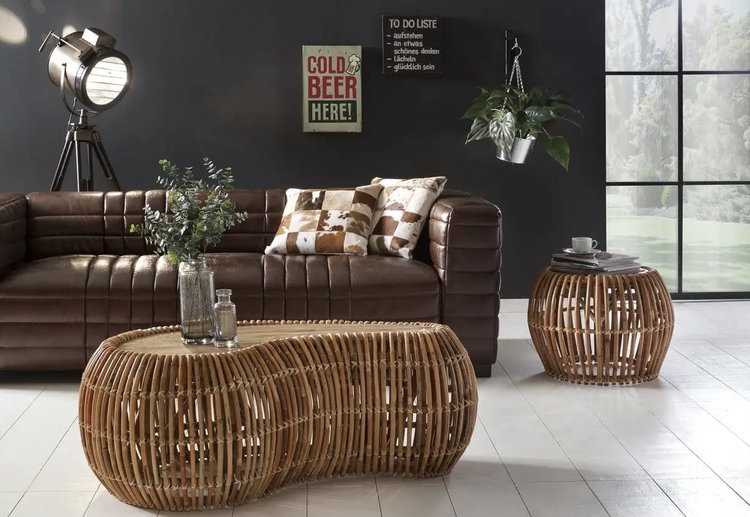
Minimal and luxurious
Minimaluxes combine minimalism with luxurious elements. This living style not only relies on clear lines and reduced forms, but also on warm, neutral colors that bring cosiness and elegance into the living space.
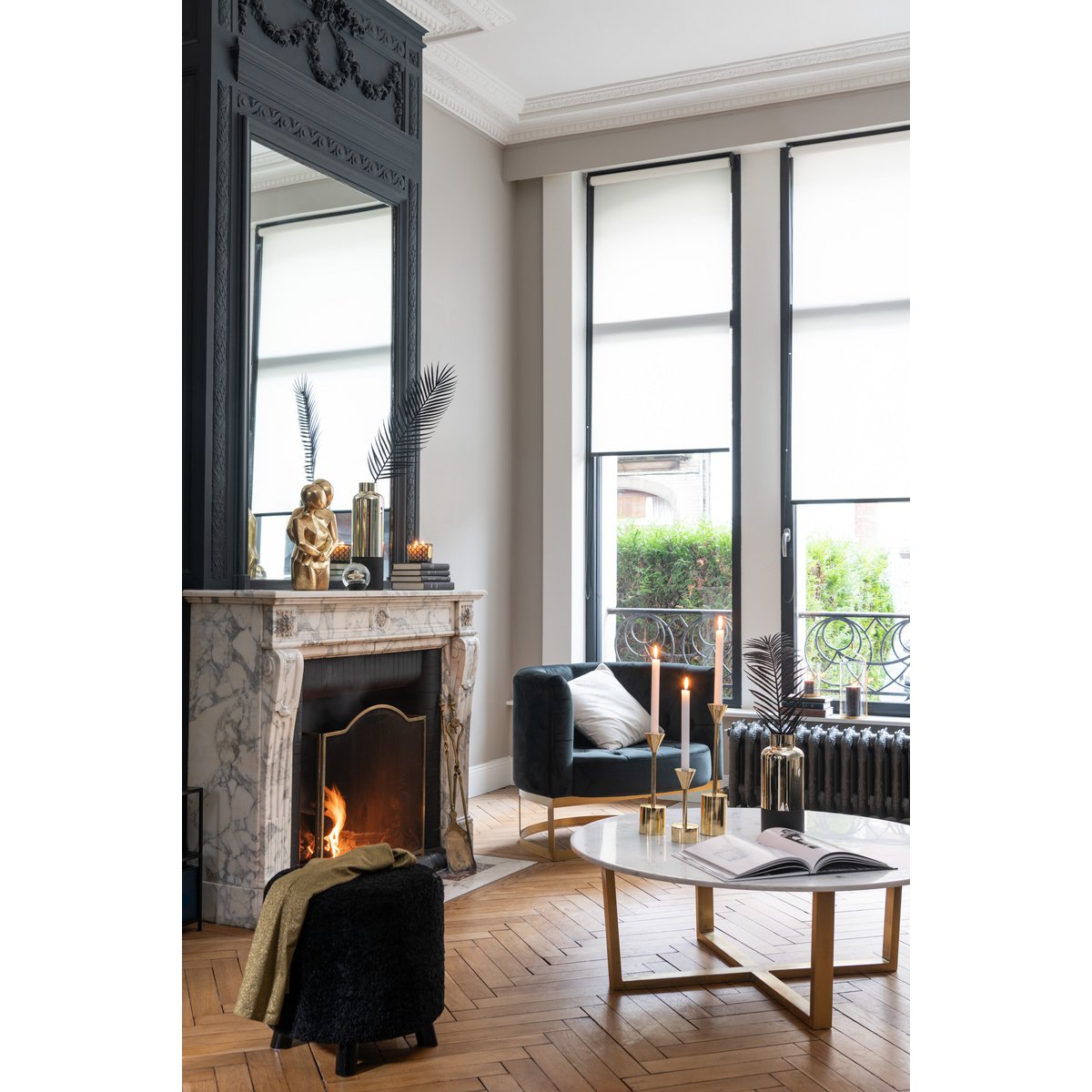
Mediterranean meets country house: a harmonious mix of style full of joie de vivre
The merger of southern lightness and rural security creates a living style that combines advantages of two worlds: the radiant freshness of the south and the homely comfort of country life. The melange of styles unleashs an organic symbiosis that is reminiscent of holidays in Provence or Tuscany - rustic, real and filled with cheerfulness.
What combines these two styles so wonderfully are their shared core principles: both have a preference for authenticity, artistry and a certain aura that testifies to past experiences. Both appreciate natural fabrics and create a cozy, inviting atmosphere. The lightness of the Mediterranean influence gives the somewhat clumsy, traditional country house style bright colors and sunny accents.
The color composition of this mix of styles combines the earthy, warm nuances of two spheres: delicate cream and beige colors form the ideal foundation, rounded by the distinctive Mediterranean white and terracotta. There are also the cozy shades of olive green and ocher yellow, as well as the delicate shades of blue that are reminiscent of the southern sky and the sea. Delicate splashes of color are set with gentle nuances of lavender and rosemary, the two styles flatter each other.
A successful furniture in this mix of styles combines the cosiness of the country house style with the airy elegance of Mediterranean facility. ”
Basically, the larger, more substantial pieces of furniture can come from the country house style, while smaller elements and accent furniture bring in the Mediterranean touch.
Seat furniture may be comfortable and inviting, as is typical of the country house style, but with lighter, airy covers in Mediterranean colors. A cream-colored sofa in a country house style immediately looks southern with pillows in olive green, terracotta or Mediterranean blue.
Characteristic pieces of furniture for this mix of styles are:
- Massive wooden tables with a patinated surface
- Open shelves for the presentation of ceramics and accessories
- Chests of drawers and cupboards in covered colors with hand -painted details
- Braided chairs and armchairs with lush cushions
- Wooden benches with colorful seat cushions
- Heat beds with airy linen curtains
- Rustic sideboards with Mediterranean ceramic
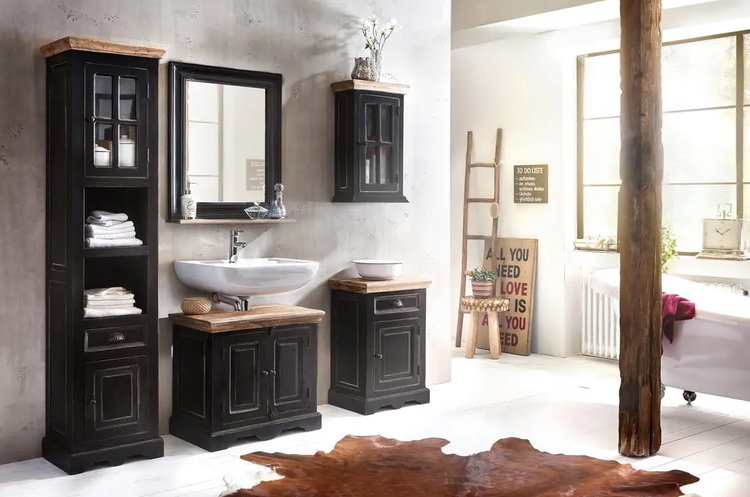
Errors you should avoid
Some typical pitfalls lurk at the style mix. First of all, you should avoid putting everything uncontrolled. Otherwise rooms will quickly get out of balance - and with them the residents.
Another frequent mistake is too much decoration . The following applies to patterns: the more striking and large a pattern, the calmer the environment should be designed. If you love flowers and exotic motifs on pillows and curtains, remain loyal to this theme world and combine with plain elements.
Finally, you should also pay attention to proportions : large, dominant pieces of furniture made of a style should be supplemented by more filigree elements from a different style in order to achieve a harmonious spatial effect.
Sustainability and style: does that go together?
The question of sustainability is becoming increasingly important in the furnishing industry. More and more people are interested in environmentally friendly living concepts that are also aesthetically appealing. But can sustainability and stylish design actually go hand in hand?
Natural luxury and upcycling
Natural Luxury combines environmental awareness with high -quality furniture design and relies on environmentally friendly production and durability. Instead of following short-lived furniture trends, this approach focuses on timeless, light designs from sustainable raw materials and local production. At the same time, the traditional furniture trade is experiencing a renaissance.
Leading brands such as the Danish furniture manufacturer Bolia put nature in the center of its collections. Your modular sofas from the AYA series combine luxurious aesthetics with sustainable craftsmanship. Let's Pause works similarly , which creates elegant furnishings with minimalist designs made of poplar wood and halfagras.
In addition, upcycling increasingly important - the creative recycling of materials that were originally considered a waste. The Flemish manufacturer Bic Carpets proves with his carpet Haven, which of 60 percent recycled nylon of old fishing nets that sustainability can be quite elegant.
The design brothers Fernando and Humberto Campana transform everyday objects into artistic pieces of furniture, as their table lamp Bambu shows with natural rattan screen.
Durable materials and furniture
Sustainable facility primarily means investment in quality and durability. Solid wood furniture is a prime example of this - they consist of a renewable raw material and contribute to reducing resource consumption due to their robustness. High -quality wooden furniture can survive generations and often become even more attractive with increasing age.
Besides wood, other natural materials such as linen, wool, cork, and leather play an important role. They are not only durable but also create a pleasant indoor climate and develop a unique patina over time. Instead of mirror-smooth, high-gloss fronts, soft, matte surfaces are increasingly being used.
If you want to live sustainably, you should also pay attention to certifications such as the "blue angel" that characterize pollutants -free and environmentally friendly products. When choosing wooden furniture, FSC or PEFC seals evidence of sustainable forestry.
Ultimately, sustainable and high -quality furniture is not only an investment in our well -being, but also in the future of our planet. It is to be hoped that Natural Luxury will soon be not just a trend, but a standard in the furniture world.
We asked experts
As part of the research and as valuable guides, we were supported by a number of experienced interior design professionals for this article. At this point we would like to appreciate this with your respective expert opinion.
Ayten Nadeau, founder of i-ten designs
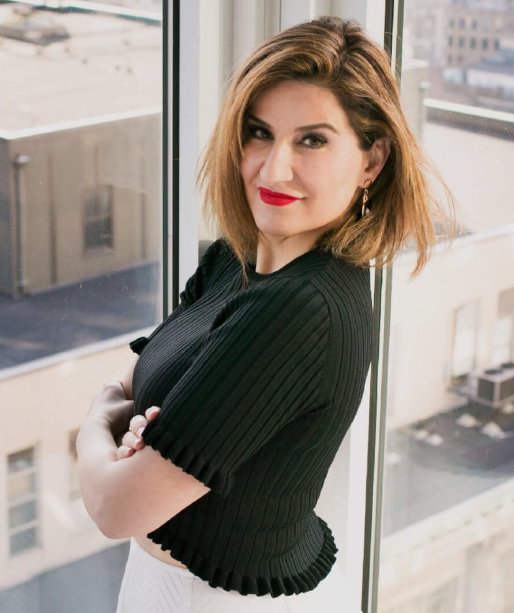
The German-born interior designer Ayten Nadeau graduated from the "interior design" with a predicate and shortly afterwards founded the full service design studio i-Ten designs .
"As a concept designer, I never start with a style. I start with the person. My job is to translate how someone lives and what they love into a visual and spatial language. Design gains meaning when it reflects the individual. Most clients don't ask for a specific style."
Some think they like "modern" or "traditional", but these are often the starting points. What leads the process are more personal indications: the way you describe comfort, the textures you attract you, as you want to feel in your room, or an art collection that shapes the conceptual framework.
Many of my projects combine more than a style in a way that feels seamless, or they are rooted in coastal life and at the same time add abundance and dimension without disturbing the overall flow - unmistakably correct for the people living in it. "
Dotan Trabulsi, founder of Optimal Home Remodeling & Design

Dotan Trabulsi is the owner of Optimal Home Remodeling & Design , a company based in San Diego who is known to combine personal style with practical elegance.
His structured approach includes the following steps:
- Lifestyle Discovery - We start how the homeowner lives: family needs, routines and emotional connection to space.
- Visual management -We test Moodboards and curated pictures to identify strong style reactions (Scandi, Japandi, mid-century, etc.).
- Functional orientation - we turn style on layout and river - design should complement the actual use of a room.
- Layering elements -we anchor ourselves with important furniture and then personalize them through accessories, lighting and texture.
Harrison's top tip:
"Start how you want to feel in the room - peaceful, energetic, grounded - and let yourself be guided by your design."
Dexter, Marketing Interior Decorator at Mandaue Foam Industries

Dexter is a freelance interior design and former specialist for virtual staging. He is currently working as a marketing interior design at Mandaue Foam Industries, Inc. His background includes the design of living rooms and condominium expansion with a pronounced view of detail and a passion for integrating trends into contiguous, stylish spaces.
“When I help home owners to find their perfect furnishing style, I always value a structured, yet personal approach that fits both their lifestyle and their aesthetic preferences.
- Know your style (or style mix): first identify your design preferences, whether modern, minimalistic, rustic, Scandinavian or even a mixture of several. It is completely acceptable to combine styles as long as the overall composition looks coherent. My job as a designer is to lead the customer to harmony between these elements and at the same time respect his personal taste.
- Create a moodboard: This serves as a visual guide for the entire room. Add your preferred color pallets, textures, patterns and references for furniture and accessories. Moodboards contribute to consolidating the overall atmosphere of the room and bringing decisions into harmony with their intended appearance.
- Planning space for space: think about your lifestyle and how you use every room. In this way you can determine which rooms you should prioritize and which furniture and accessories are absolutely necessary. Functionality should never be sacrificed to aesthetics.
- Select with care: From large pieces of furniture to the smallest accessories, each piece should support your chosen style and match the size of your space. Good lighting, for example, is more than just decorative; It determines the mood and underlines its design decisions.
- Stay realistic at the budget: set a budget frame early. A clear budget ensures that you can provide funds for important pieces such as beds, sofas and lighting and at the same time leave space for accessories and styling. Do not be afraid to invest in high quality items that last long and combine them with affordable finds for style and layering.
Ultimately, the perfect design style is one that reflects your personality while supporting your daily needs. It's about creating a space you love coming home to and that feels unique.
Final words
Different furnishing styles not only affect the appearance of our living spaces, but also on how we feel in it and how we feel our quality of life. It is therefore crucial in consequence that the chosen style fits our identity. As we have seen, the time and sincere self -reflection are required to find your own furnishing style. Professional instructions are always helpful.
To discover your ideal interior design style, mood boards, style quizzes, and an honest inventory can be very helpful. Ideas of coziness, balance, and beauty in imperfection show us that interior design is more than just visual – it reflects feelings and philosophies.
Ultimately, a home should primarily serve the people who live in it. A harmonious furnishing style arises not only by the consequences of trends, but also by taking into account your own needs and preferences.
FAQs - frequent questions will be answered shortly
Which furnishing style is timeless and sustainable?
A timeless furnishing style is characterized by timeless designs, high -quality materials and a subtle color selection. Solid wood furniture and fabrics made of natural materials such as cotton or linen are particularly environmentally friendly and durable because they have a long time and gain individual charm over time.
How can I make my apartment more luxurious?
High -quality materials, careful lighting and selected designer objects are crucial to achieve a demanding appearance. The spacious windows, high ceilings and clear spatial structure emphasize the noble character of the room even more. It is important to pay attention to small details, e.g. B. the use of high -quality materials and stylish accents.
Which furnishing styles are particularly suitable for the living room?
The Scandinavian furnishing style with its bright and cozy atmosphere is particularly suitable for the living room. The Japandi style, the Scandinavian and Japanese design, is also an excellent choice. In addition, the boho style creates a relaxed and creative room atmosphere.
How can different furnishings be harmoniously combined?
For a harmonious combination of different styles, you should limit yourself to a maximum of three styles and choose a connecting element like a consistent color concept. The 80/20 rule helps to complement a main style with accents from other styles.
Is sustainable living compatible with a stylish furnishing concept?
Yes, the combination of sustainable and elegant living is quite possible. The trend, which "Natural Luxury" , focuses on producing products that are environmentally friendly and have durable designs from sustainable materials. The use of upcycling furniture and certified products opens up the opportunity to create an aesthetically appealing facility that is also environmentally friendly.

Owner and Managing Director of Kunstplaza. Journalist, editor, and passionate blogger in the field of art, design, and creativity since 2011. Successful completion of a degree in web design as part of a university study (2008). Further development of creativity techniques through courses in free drawing, expressive painting, and theatre/acting. Profound knowledge of the art market through years of journalistic research and numerous collaborations with actors/institutions from art and culture.

